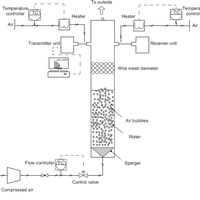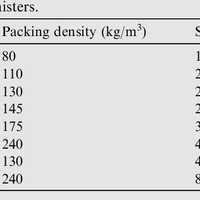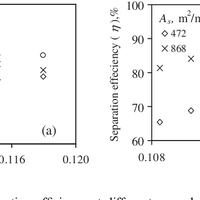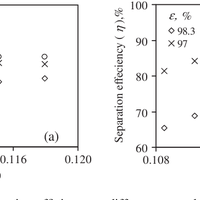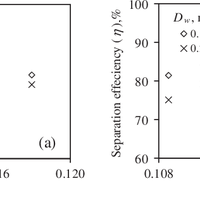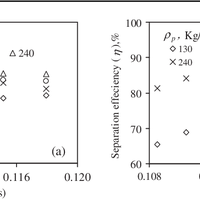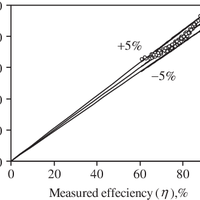Abstract
Effects of design parameters on performance of wire-mesh mist eliminators were experimentally investigated in 15cm bubble column. The demisters performances were evaluated by droplet collection efficiency as a function of wide ranges of operating and design parameters. These parameters include: droplet size exiting the demister (250-380μm), specific surface area (236-868m2/m3), void fraction (97-98.3%), wire diameter (0.14-0.28mm), packing density (130-240kg/m3), and superficial gas velocity (0.109-0.118m/s. All demisters were 15cm in diameter with 10cm pad thickness, made from 316L stainless steel layered type demister pad wires. Experiments were carried out using air-water system at ambient temperature and atmospheric pressure. The experimental data on the droplet removal efficiency were obtained using Malvern Laser Droplet Sizer. The removal efficiency was found to increase with the increasing the demister specific surface area, packing density, and superficial gas velocity. In contrast, the removal efficiency was found to increase with decreasing the demister void fraction and wire diameter. The separation efficiency is correlated empirically as a function of the design parameters. A good agreement was obtained between the measured values and the correlation predictions with ±5% accuracy. © 2010 King Saud University.
Figures
Author supplied keywords
Register to see more suggestions
Mendeley helps you to discover research relevant for your work.
Cite
CITATION STYLE
Al-Dughaither, A. S., Ibrahim, A. A., & Al-Masry, W. A. (2010). Investigating droplet separation efficiency in wire-mesh mist eliminators in bubble column. Journal of Saudi Chemical Society, 14(4), 331–339. https://doi.org/10.1016/j.jscs.2010.04.001


